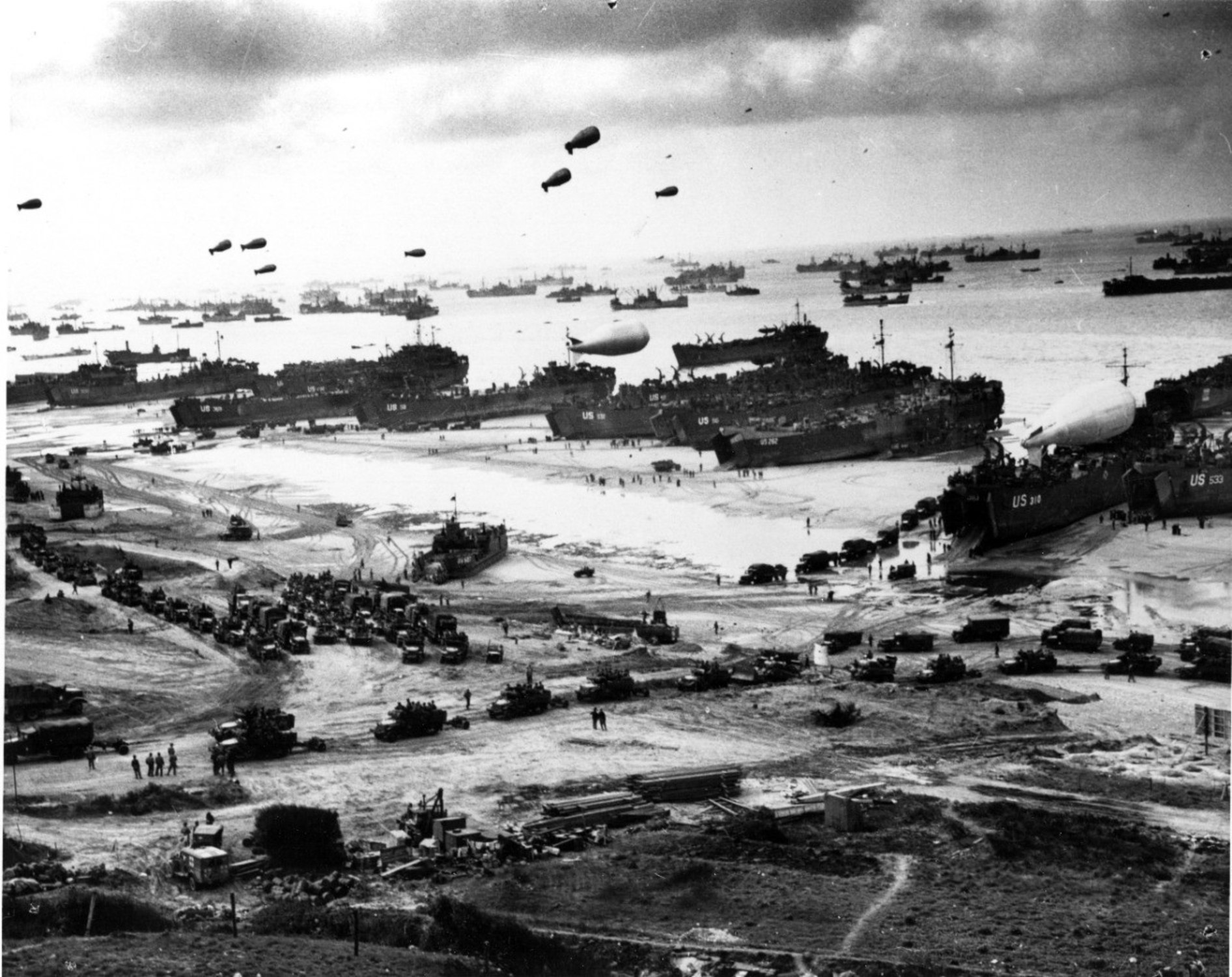
- Home
- An unprecedented endeavour
- A highly complex organisation
Relying equally upon the air force, navy and ground forces, Operation Neptune required rigorous organisation. Subsequently, the choice of a date and hour for the landings was subject to numerous constraints.
Transporting the assault forces
The Neptune fleet was divided into two main forces. The Western Task Force (Rear Admiral Kirk) was charged with deploying the troops of the First United States Army on Utah and Omaha beaches. The Eastern Task Force (Rear Admiral Vian) was to land the forces of the British Second Army on Gold, Juno and Sword beaches.
In each of the five sectors, an initial force assembled the transport landing craft, and a second force consisted of support vessels, whose artillery would target the German batteries. After regrouping 30 km south-east of the Isle of Wight, at point Z (code-named Piccadilly Circus), the convoys then took one of ten marked channels that had been previously cleared of mines.
In total, 1,200 warships and 5,700 transport vessels (including 4,266 Landing Ship and Landing Craft) were charged with ensuring the landing of 130,000 men and 20,000 vehicles within a timeframe of three tide cycles.
Determining D-Day and H-Hour
The lack of landing craft forced General Eisenhower to postpone the offensive, initially planned for May, until June in order to benefit from an additional month of production.
The date of the assault was constrained by the Allied strategists’ tactical decision to land at dawn (in order to cross the Channel under cover of darkness), and following a full moon (to facilitate the action of the airborne forces). It was also decided to land at mid-rising tide to limit the distance to be covered in the open while maintaining visibility of some of the anti-landing craft obstacles installed by the Germans. This combination of criteria restricted the possible dates to 5, 6 and 7 June. Taking the tidal lag into account, H-Hour was set at 6:30 for the American sector, 7:25 for Sword and Gold beaches, and 7:45 for Juno so that the rocky outcropping in front of the shore would be submerged. The first light of day would be used for the preliminary bombardment of the German positions.
The weather also had to be favourable, with minimal winds and good visibility to facilitate naval manoeuvres and ensure the effectiveness of the air force.




